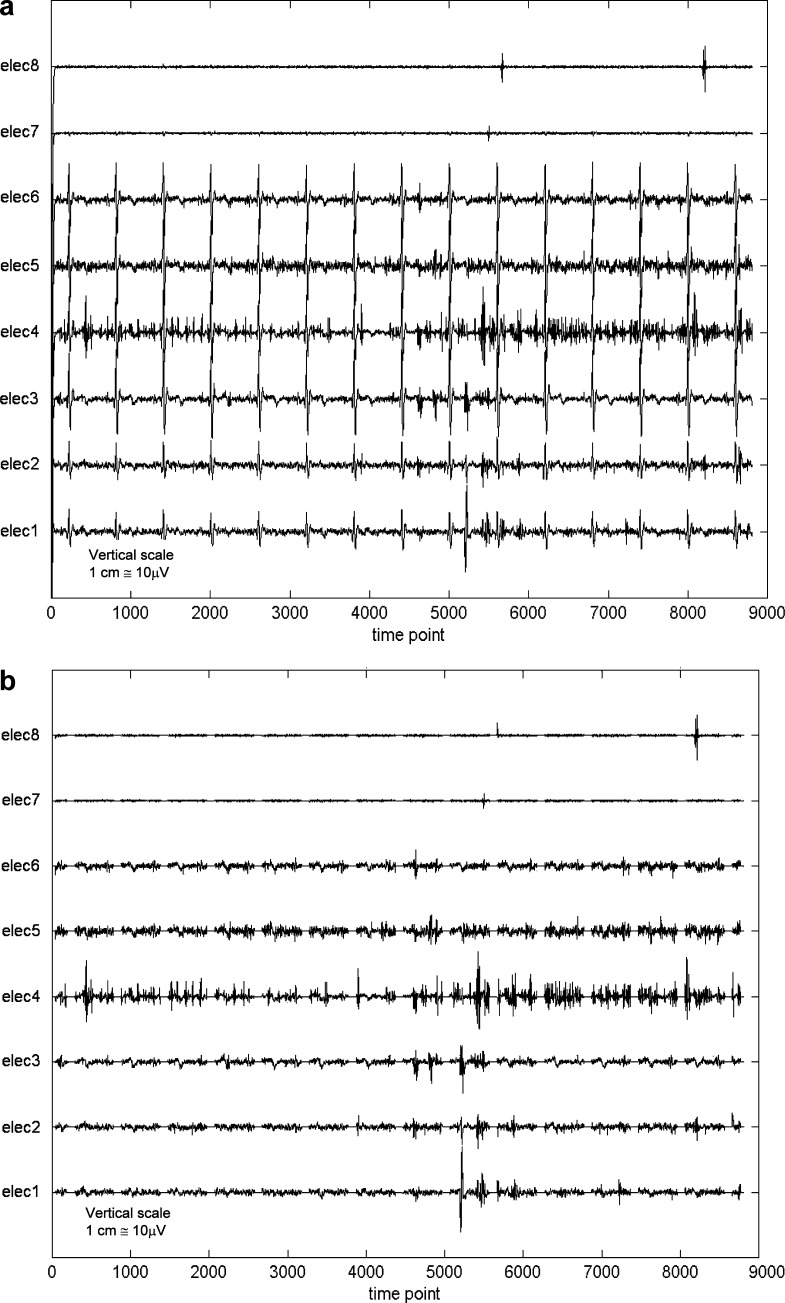Fig. 2.
Example of the raw EMG and ECG data of one of the exercises (standing). a EMG and ECG signals over the eight pairs of electrodes (elec1 stands for the signal of the concave electrode at the upper end vertebra; elec2 is the signal of contralateral convex electrode at the upper end vertebra; elec3 and elec4 are the signals of the concave and convex electrodes at the apex vertebra; elec5 and elec6 are identical to elec1 and elec2, but at the lower end vertebra; elec7 and elec8 represent the EMG signals on the concave and convex side on the latissimus dorsi muscle). b The raw EMG data after digital filtering of the ECG signals

